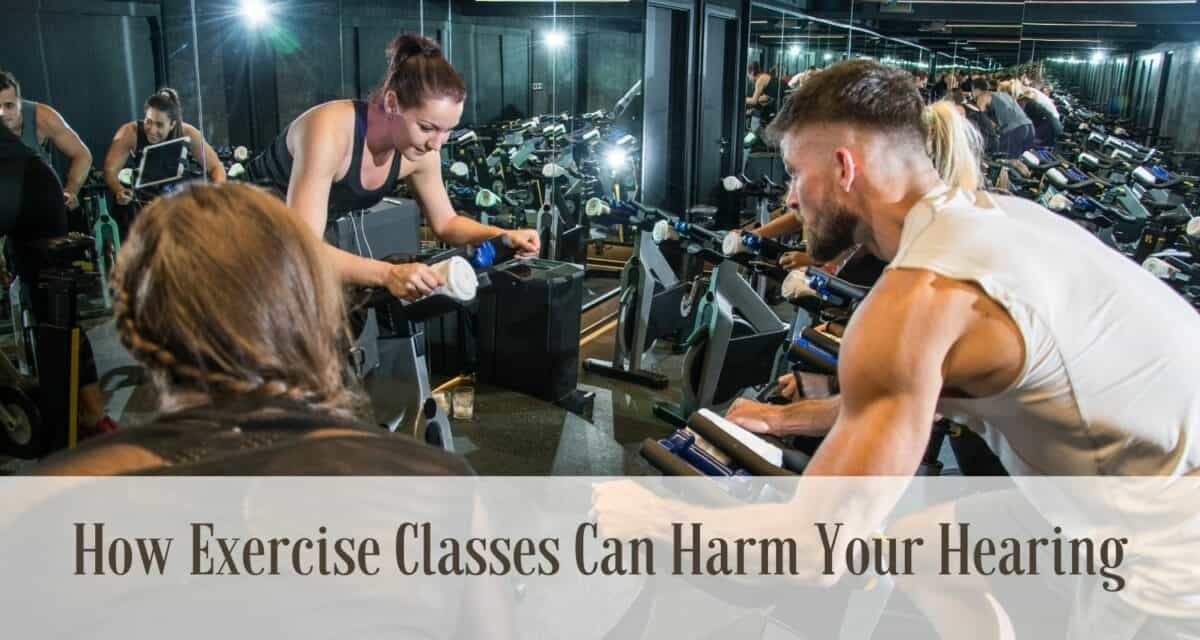Exercise has so many benefits. Regular cardiovascular exercise for 30 minutes or more at least three times a week can protect your heart, decrease hypertension, decrease the risk of cognitive decline, and lower your chance of diabetes. Meanwhile, building muscles increases strength, protects your bones, your joints, and can reduce body pain. While any exercise routine most likely boosts your mood, your confidence, and sense of well-being, it is important to exercise cautiously. Too much, or the wrong execution of an exercise can cause lasting damage. However, often overlooked is the risk to your hearing, due to some common choices around exercise.
Weightlifting & Hearing Damage
Lifting weights can be feel good once you get used to it. Aside from the exhilaration it often causes, lifting weights can also help maintain muscle, increase strength, bone health, and decrease the risk of injury. However, like anything, lifting should be done correctly and safely. All too often people when they overexert themselves can experience ears that feel clogged or plugged. Make sure to work up slowly when lifting. Start with something small that feels easy. After a couple of reps, you will most likely feel the burn even with a small weight. If you move too fast and lift too much it can damage the inner ear.
Intracranial Pressure
If you move too fast to a higher weight, it can cause you to strain, and this can cause pressure within the brain commonly called intracranial pressure. Side effects of intracranial pressure besides headaches and blurred vision include hearing loss. This is because intracranial pressure also creates pressure in the inner ear. Frequent pressure can damage the tiny hair-like cells in the ear that transmit audio information from the ears to the brain leaving individuals with permanent hearing loss. To prevent this, clear your ears, so pressure can’t build up, before lifting. You can usually do this simply by yawning or moving your jaw around. Start small and don’t lift more than you can and remember to breathe. Holding your breath can amplify pressure and if you have a cold or allergies, skip your workout, or take a decongestant and wait for it to take effect.
Dangerous Decibels
If weightlifting is not your thing, and you prefer cardio, this doesn’t mean you are free of risk for hearing damage during your workout. One of the most common forms of hearing damage affecting people of all ages is noise-induced hearing loss (NIHL). NIHL occurs when sounds pass a certain listening threshold that causes such extreme vibrations in the inner ear, that it damages your cells. Many people enjoy working out together for motivation with loud music for inspiration.
For this reason, many people choose exercise class, but the loud music as it echoes off the ceiling can quickly grow dangerously loud. So loud in fact, that it often passes the threshold for safe listening. Spin class, Zumba, Aerobics! Whatever the current fad, many of your other favorite exercise classes typically play loud music to make you work harder. However, often the volume in these classes exceeds 90-100 dB. This is loud enough to cause permanent hearing damage in just 15 minutes of exposure.
How Do I Know if I am at Risk?
If you ever leave an exercise class feeling pumped but your ears are ringing this means the volume is too loud. Ringing in the ears is technically called tinnitus and indicates damage has occurred to the cells of the inner ear which we rely on for sending auditory signals to the brain. If you’ve experienced tinnitus upon leaving class, talk to the trainer or gym manager about keeping the music at a more reasonable volume level. Remember, this isn’t just affecting your ears but everyone who attends the class.
Protect Your Hearing
If confrontation is not your thing and the class is too good to pass up, hearing protection is a great option. Foam earplugs are lightweight and portable and a great way to lower the decibel level by as much as 33dB. This can create a safe buffer for listening while working out so you can leave feeling great, with your hearing intact. If you feel that you have an issue with your hearing, schedule a hearing exam today. We can help diagnose your hearing ability and help you find the best solution for your hearing needs.


